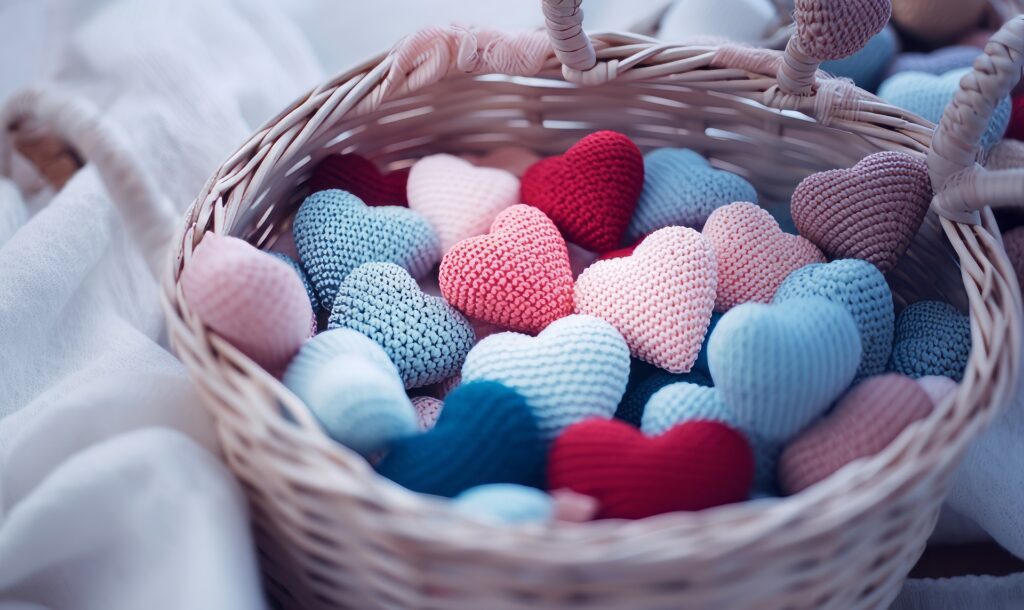Crocheting scarves is a craft work, blending creativity with the satisfaction of working with yarn. One of the most critical elements in crafting the perfect scarf is choosing the right yarn. The texture, weight, fiber composition, and color can drastically affect your finished product.
There are two main categories of yarn, natural and synthetic. Synthetic fibers are 100% man-made fiber (polyester, rayon, nylon, etc.). Natural yarn like wool yarn is made from sheep fleece. In this guide, we’ll explore the top five yarn types for crocheting scarves, examining their characteristics, benefits, and ideal applications.
1. Acrylic Yarn: Affordable and Versatile
Acrylic yarn is a popular choice for most crocheters, especially beginners. Synthetic fibers are versatile and come in a wide variety of colors and weights, making it ideal for almost any scarf project. Acrylic yarn is inexpensive and perfect for a beginner who is trying out the craft or working on multiple projects. It does not easily wear out or lose its shape and color even after repeated washing. Most acrylic yarns are machine washable, making scarves easy to maintain.
Variety: Available in numerous textures, from smooth and soft to textured or chunky, catering to different scarf styles.
Ideal Applications:
Acrylic yarn is excellent for everyday scarves, particularly for casual use or gifting. It’s also fantastic for trying out new patterns because it is forgiving enough to create uniform stitches.
2. Wool Yarn: Warm and Luxurious
The major use for yarn people in pursuit of that soft feel and warmth includes sheep fleece – wool, which is perfect for any scarf in preparation for cold times. It keeps the wearer warm while holding a warm air blanket around, maintains good elastic properties by its own to ensure regular tension in the course of a crochet job, and keeps the head easy even during warming conditions by preventing overheating.
Variety: Wool comes in different types, such as merino, alpaca, and cashmere, each offering unique textures and softness.
Ideal Applications:
Wool yarn is ideal for winter scarves, particularly those with intricate patterns like cables or lace. Choose merino wool for softness and comfort or opt for alpaca wool for an extra luxurious touch.
3. Cotton Yarn: Lightweight and Breathable
Lightweight, breathable cotton yarn, it is the best thing to have for scarves on spring and fall seasons. The product is hypoallergic and soft to skin made from natural fibers. Cotton is very gentle with the skin; this means that it can easily get along with sensitive or allergic skin.
It’s light weight and always ensures comfortability in air quality. Cotton yarns are excellent for expressing subtle stitch patterns because of its soft, smooth texture. It won’t pill with frequent washes, making scarves that last.
Ideal Applications:
Use cotton yarn on scarves with intricate openwork designs or those more intended for fashion than function. It’s also well-suited for children’s scarves because it’s gentle and hypoallergenic.
4. Blended Yarn: Best of Both Worlds
Blended yarns combine two or more different fibers such as wool and acrylic or cotton and silk, to provide a balance of desirable qualities. Such yarns are chosen based on specific needs to give versatility and improved performance. Blends can be engineered to provide warmth, softness, durability, or a mix of these qualities.
Blended yarns are usually cheaper than pure fibers like silk or cashmere. It’s higher performance is got from Blends of fibers such as wool and acrylic make them warm, durable, and easy to care for.
Texture can be very creative in scarf designs. Blends often have a distinct texture.
Ideal Applications:
Blended yarns are best used for multi-purpose scarves that require aesthetic appeal but also functionality. They work well for projects that call for softness, warmth, and durability.
5. Silk Yarn: The epitome of luxury and elegance
Silk yarn is the best for anyone who wants to create a scarf that will remain heirloom quality. It glows, with a silk smoothness, that makes it a favorite in the higher-end crochet projects. Silk has a natural shine that gives scarves an elegant, sophisticated appearance. It feels very smooth against the skin. For something that feels so fragile, silk is surprisingly strong and durable. Silk is suitable for all kinds of climate as it can provide warmth during cold weather and coolness during hot weather.
Ideal Applications:
Silk yarn is ideal for statement pieces or scarves that will be used for formal events. Its drape and sheen are ideal for shawl-like scarves or those with delicate lacework patterns.

Even though the above five yarn types make excellent options to get started with, several criteria must be taken into account before deciding which one best fits your scarf project.
1. Scarf purpose
For warmth: choose a wool or a blend that contains wool as its significant portion
For style: opt for a silk or cotton that’s very lightweight but still have very bold colorways or exciting textures.
Versatile: use an acrylic or a blend
2. Yarn weight
The weight of the yarn affects the appearance and functionality of the scarf:
Lace Weight- Best for lacy, airy scarves
Sport or DK Weight: Best used for mid-season scarves that are moderately warm
Worsted or Aran Weight: Best suited for warm winter scarves
Bulky or Super Bulky: Best suited for chunky scarves.
3. Stitch Pattern
There are some yarns with which the detailed stitch patterns are best obtained:
Examples include smooth yarns of cotton and silk, on which detailed designs are best depicted.
Textured or fluffy yarns, such as mohair can hide stitches but be very interesting to look at.
4. Care Requirements
If this scarf is to be used daily, then you are going to want to go with easy-to-clean materials like acrylic or cotton for it. Luxurious materials like silk or cashmere can be used for that special occasion.
The yarn you choose in your crochet scarf can indeed make the difference between the simple and great-looking project. Whether you need scarves that are warm and cozy, stylish, or versatile, there’s a type of yarn to suit the need. Acrylic is inexpensive and offers a large variety, wool provides unrivaled warmth, cotton is breathable, blended fibers combine the best of other fibers, and silk adds the touch of luxury. To make beautiful yet functional scarves, understand the properties of these yarns, and how they interact with your chosen pattern.


